Create an Amazon Business Account

Create an Amazon Wedding Registry
Alxon-Hunnic Horse-and-Rider Statuette, Late Fifth Century AD, Bactria, Afghanistan. Pritzker Family Collection, Chicago.
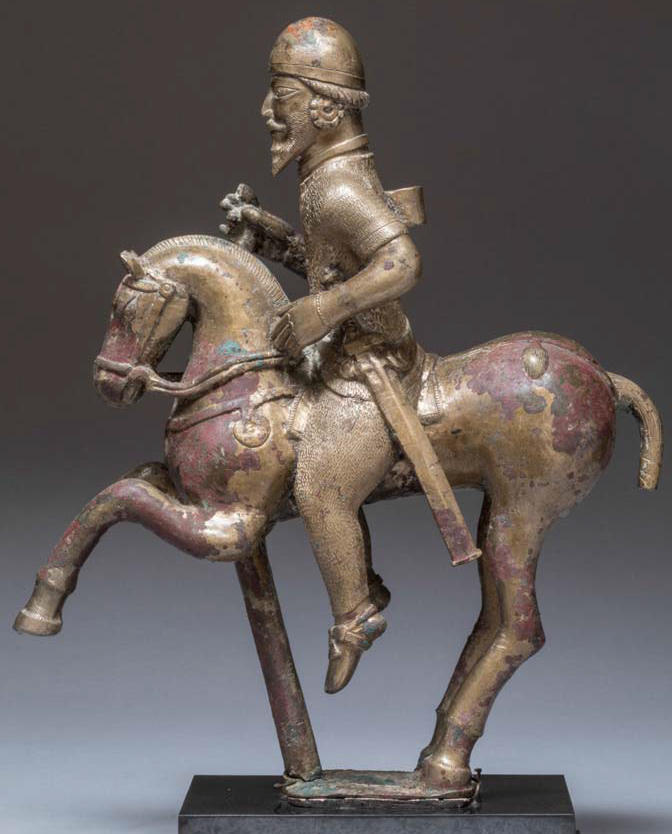
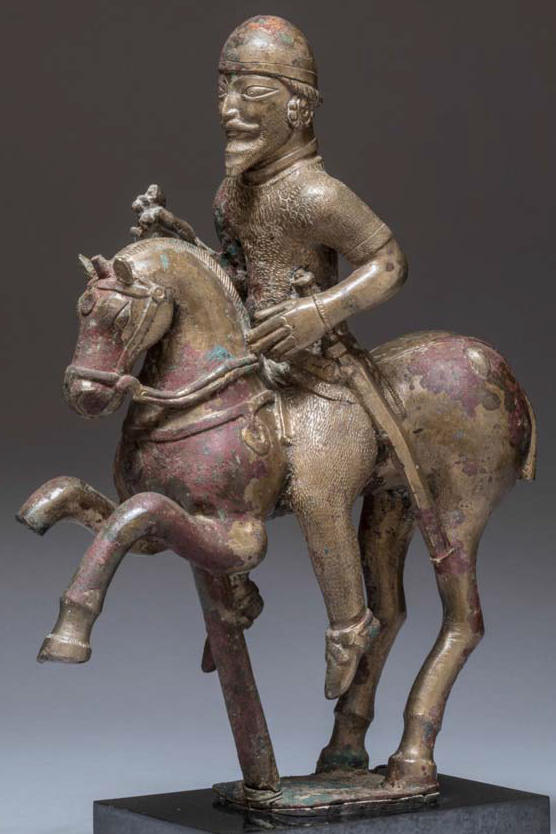
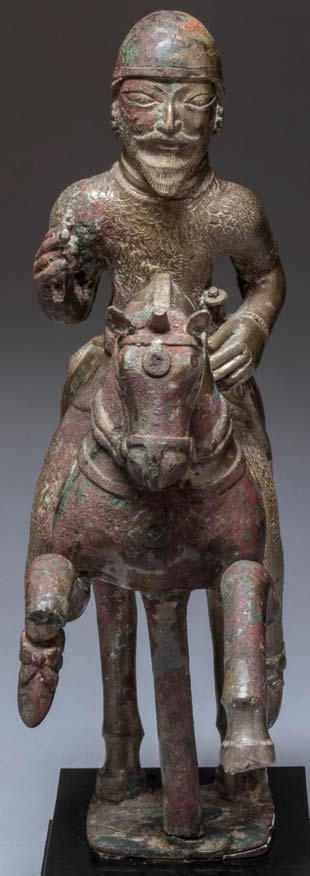
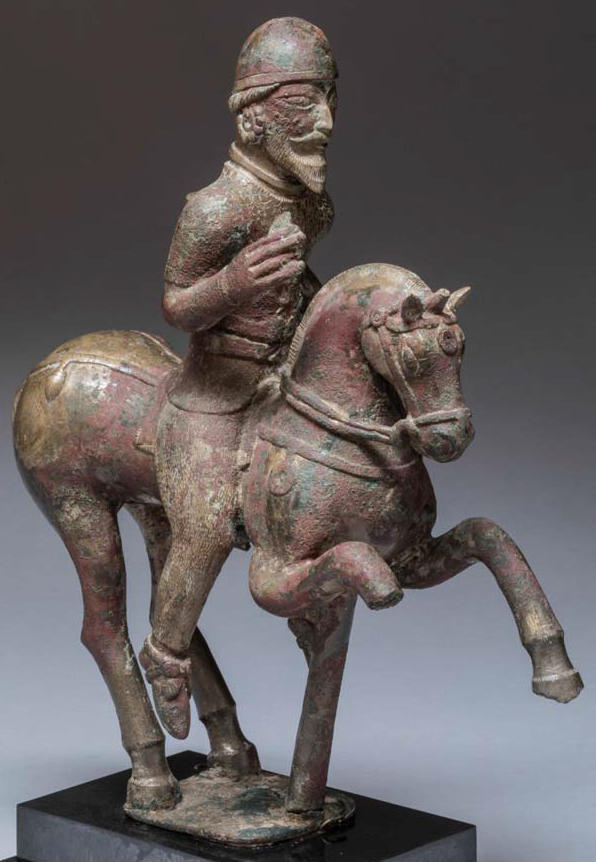
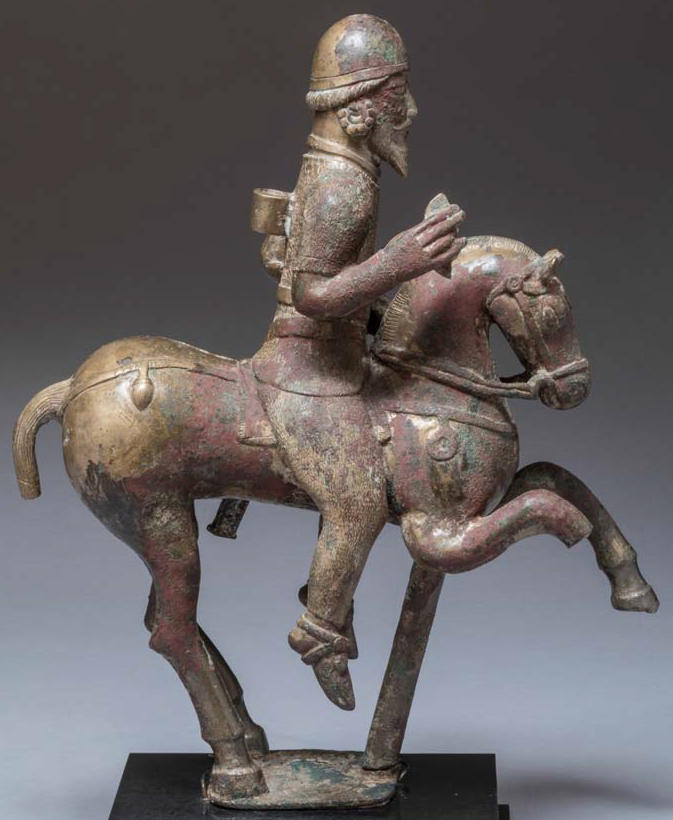
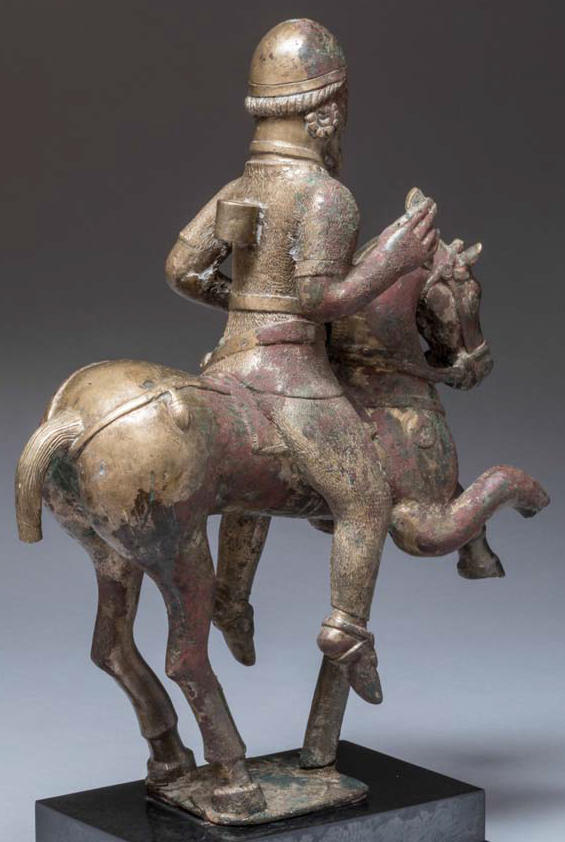







Bronze statuette of a noble horse-and-rider of the so-called Alkhon/Alxon wave of the “Iranian Huns,” dated to the end of the fifth century CE, from Northern Afghanistan.
TECHNICAL DESCRIPTION
The horse-and-rider sculpture under discussion has a total length of 27.5 cm from the front hoof to the tip of the now-broken tail. Its broadest width, seen from the front, is 11.0 cm; the total height from the base to the helmet measures 34.0 cm. Unfortunately the right front hoof broke off in antiquity and is now lost. The weight is 6100 grams (6.1 kilograms). The statuette was cast of bronze, which usually contains seven parts copper and three parts tin.
The statuette shows a helmeted noble Alxon warrior on his prancing/rearing horse, a long sword on his left side hanging from his belt. His left hand holds the reins, while the right hand once held an object now broken off and lost. My examination in Chicago, with the statuette in front of me, revealed that this lost object must have been a wreath-like ring. Most curious and as yet unsolved is the problem of a tube on the back of the rider's back, which was cast together with the statuette, i.e., not added later. The rider is shown with finely combed and arranged hair visible beneath the back of the helmet; he also has a pointed beard and a fine moustache. The upper body is clad in a close-fitting kind of shirt, and the figure also wears a tight second shirt under that with long sleeves. He wears long, very tight trousers and shoes with clasps. The rider's ears are adorned with two large hoop earrings with seven visible “pearls” meant to be cast with it, or soldered onto it. The warrior sits on a special style of saddle, to be discussed later. The bridle is adorned with two frontal phalerae shown on the left and right sides of the horse’s chest; on the upper hindlegs two “flying tassels” hang down from the bridle. This bridle surrounds the horse’s back beneath its tail. The tip of the tail also was lost in antiquity.
...
Very important for the date of our statuette is the reading of the punched inscription written in cursive Greek letters in the Bactrian-Iranian language. This inscription has been read and discussed in detail by Nicholas Sims-Williams. In his work, the inscriptions reads, translated: “Hrilad gave (this) to the God Zhun.”
Sims-Williams interprets the name “Hrilad” as the personal name of the donor of this stunning horse-and-rider statuette, and he interprets the contents as indicating that this “Hrilad” gave and dedicated this statuette to the temple of the god Zhun. As for the question, who is this god Zhun, we will discuss this later in detail, but for the moment we should interpret “Zhun” as the name of the ancient Iranian god of time, “Zurwan.” Furthermore, and following an email exchange (November 20, 2017) in which Nicholas Sims-Williams kindly informed me that, due to the type of the starting Greek letter “ypsilon,” the inscription inscribed on our rider’s helmet dates it to no later than the late fifth century CE.
A Unique Alxon-Hunnic Horse-and-Rider Statuette
(Late Fifth Century CE)
from Ancient Bactria / Modern Afghanistan
in the Pritzker Family Collection, Chicago
Ulf Jäger
Saxon Academy of Sciences, Leipzig, Germany
Source: "A Unique Alxon-Hunnic Horse-and-Rider Statuette", by Ulf Jäger in SINO-PLATONIC PAPERS, August 2019